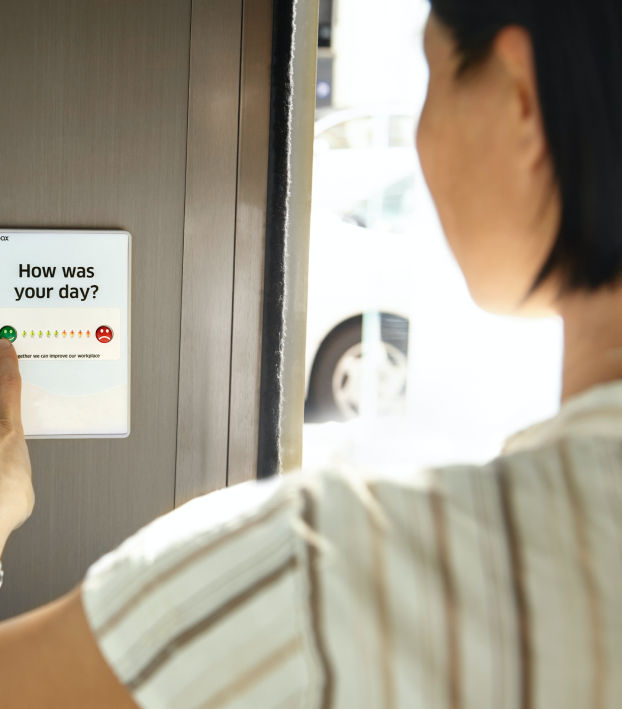
Residential care
Step 6: Make the move & settle-in
Moving home is an emotional time – change always is! And a move into residential care is no different. It can be hard to leave behind memories and your current routines. A clear plan and knowing what to expect can help reduce the worry.
1
What to pack
When you are getting ready to move, think carefully about what you want to take with you so you can personalise your room to give it some familiarity and warmth. Your room will be your new home, so personal belongings and mementos can make it feel like home.
Most of the furniture you need is likely to be provided, but you might want to bring your favourite chair or cushions. Each home has its own guidelines and you may be limited by space, so check with the provider ahead of the move to find out what you can bring. Ask your care provider if they have a checklist of things to bring as that will help you to focus on what is important. It might be included in your new resident pack. You can also check our quick list below to give you an idea of what to pack.
This might also be a time to start thinking about what you want to give away to your family, and tell them the stories behind the items so they know why they are special to you.
If you have a pet, you will need to check with the care provider if the pet can come with you. If this is not possible, ask your family and friends to see who is able to look after your pet. And ask the care provider about the pet coming to visit you.
2
Getting ready to move
Preparation and co-ordination is key to making this an uncomplicated day.
Whoever is helping you to move should organise a time with the aged care provider, so that someone is available to dedicate time to help settle you in – avoid the busy times. Someone in your family might want to arrive before you and get your room set up ahead of your arrival. This can help you to instantly feel at home.
- Some of the things that would be good to check with the staff member include:
- Layout of your room
- Test that everything works, including the television and call buttons
- If you are bringing any electrical items you may need to have them tested and tagged to ensure they comply with Australian safety standards – the care provider may charge a fee to arrange this for you
- Hang some photos or pictures on the wall
- Ask about the meal times and activities rosters and find out where details of these activities and times are posted so you can become comfortable with the routine
- Ask about visiting hours and rules (and then let everyone know) so your friends and family can plan visits to come and see you
- Take a walk around your new home so you know where things are and what you have available
- Ask for introductions to key staff and other residents
- Find out whether the care provider has an account system to deposit money for your pruchases if there is a coffee shop or other extras you might want to buy, so you don’t need to find cash every time
- Check if you can continue to see your own doctor, or what medical access and services the care provider offers.
- To help you settle in, if you check with the care provider before the day, your family might be able to stay and have a meal with you. It is good idea to pick a day when your family have some time to spend with you.
- Have an early night and get some rest, so you are ready for the next day when you can join in with activities and make friends with some of the other residents.
3
Moving day
The staff should spend time with you in the first few days to talk about your needs and preferences and develop a care plan to ensure you have the support you need and make you comfortable. The staff are there to help and are used to helping people settle in, so let them know if anything is worrying you.
You may expect some confusion while you settle into a new routine. This is normal. We all take time to get used to something new, including a new home. Meal times may be different and the food might be different to what you are used to eating. The staff will want to know about any dietary needs and preferences you have.
Most people find that after a few days you start to adjust. Find someone who makes your tea just right, meet another resident who likes a chat, and things start to feel more like home.
If your spouse is still living in your home, you might be able to arrange with your care provider for your spouse to join you for lunch each day. The provider might charge a small fee for this.
If you are missing your favourite restaurant or coffee shop, friends and family may be able to take you out for a meal or a day trip. You just need to arrange with the staff beforehand. You can even have time away if you wish to spend a night or weekend with family, for example. This is known as Social Leave, which allows you to be away for up to 52 days in a financial year without losing your room.
You will still need to pay for your room and care costs during this time.
4
Your care plan
Care staff need to work with you to develop a care plan. You and/or your personal representative should be involved in these discussion so that the plan is personalised to take into account your care needs, capabilities and wishes. The outcome will be a documented plan that covers:
- Your care needs, goals and preferences
- The services you will receive
- Who will provide the services
- When the services will be provided.
Developing the plan may start with ensuring your medical and care needs are met, but it is also important that it takes into consideration your physical, social, emotional, and spiritual needs as well as lifestyle. Make sure you offer your opinions and make your preferences heard.
Shortly after you move into care, the staff will organise an external assessor to conduct what is called an AN-ACC assessment. This is part of developing the right care plan, and ensuring the provider receives funding to cover the costs of caring for you. Most of this is likely to be funding provided by the government, but you may also be asked to contribute to this through a means-tested care fee. Find out more about the finances here.
The plan should be reviewed on a regular basis.

A quick list of what to pack
You need to take with you clothing, personal items and medicines. But you should also take items you need for your hobbies or interests and mementos that are special to you. Ask your care provider for a list of what to bring and any limitations. Things to pack might include:
- Comfortable & machine-washable clothing need to have your name labels and the provider can arrange this for a fee.
- Shoes and slippers should be comfortable and well-fitted.
- Toiletries bag. Your provider may provide basic toiletries, but if you are used to specific brands or have personal items you should pack these.
- Medications and prescriptions.
- Personal aids such as hearing aids, glasses and personal mobility aids (eg walking sticks and frames) should all have your name on them. Note that some facilities prefer for you to use their own equipment.
- Small electronic equipment such as radio, clock, iPad, kindle, chargers etc.
- Favourite snacks or treats which are non-perishable (eg sweets and biscuits) etc in your room. Be sure to check if there are any restrictions.
- Items for your interests and hobbies which may include books, games, musical instruments etc.
- Photos and mementos from home to decorate your room.



Things I want to know…
What can I expect from living in care?
Your day might look at bit different than it was at home and routines might change. While you should express your concerns and preferences, remember that the staff need to manage their time to ensure everyone is looked after.
The more you participate (within your capacity) the more you will fit into the community of residents and find your days are busy and fun.
What if there is a family dispute?
Family members may have differing opinions around your care and support needed. This can make it difficult for carers to provide the care, and to know who to listen to. Hopefully you plan ahead and have in place an Enduring Power of Guardianship (may have different name in various states). This nominates the person who you grant the legal responsibility for decisions on where and how you live, but only if you can no longer make these decisions yourself. The care provider may ask for a copy of this document when you enter care and this will be the person they take direction from.
If families are facing conflict, finding a qualified mediator may help.
How do I adjust now I am left at home alone?
If you staying at home, after your spouse has moved into care it will also be a time of adjustment for you as you get used to a new routine too. Take note of the visiting times so you can visit and plan how you can get there. Talk to the care provider about whether you can join your spouse for meals.
It is also okay to give yourself permission to go out with friends and family and enjoy yourself. Perhaps now is the time to start that hobby you always wanted to do, or learn something completely new. Ask at your local council about community programs and support groups.
How do I stay connected to my friends, family & community?
Let them know the visiting times, and hopefully they are able to visit you. You might also learn to use an electronic devise or smart phone that allows you to have video calls with family and friends.
It may be hard to deal with loneliness and isolation sometimes, as they will also have other things in their lives that they need to do and enjoy. Be patient with them, as they are adjusting too.
You might be able to arrange with friends and family to take you out for the day or to an activity you want to continue to do. In some cases, you may even be able to stay with family overnight but this will depend on their ability to provide the care you need.
If you have any clubs, church activities or social groups that you want to stay involved with, you should talk to your care provider when you are developing and updating your care plan.
What I don’t have anyone who can visit me, or my family live too far away to visit often?
There are always activities happening within your new home that you can be involved with to enjoy and keep you connected with other people. Also, if you spend some time in the common areas, you might find someone to have a chat with.
The Community Visitors Scheme (CVS) is a program that can arranges a volunteer to visit you to provide friendship and companionship. Click here for information.